Great Falls Public Safety Levy panel details rise in violent crime, drug use
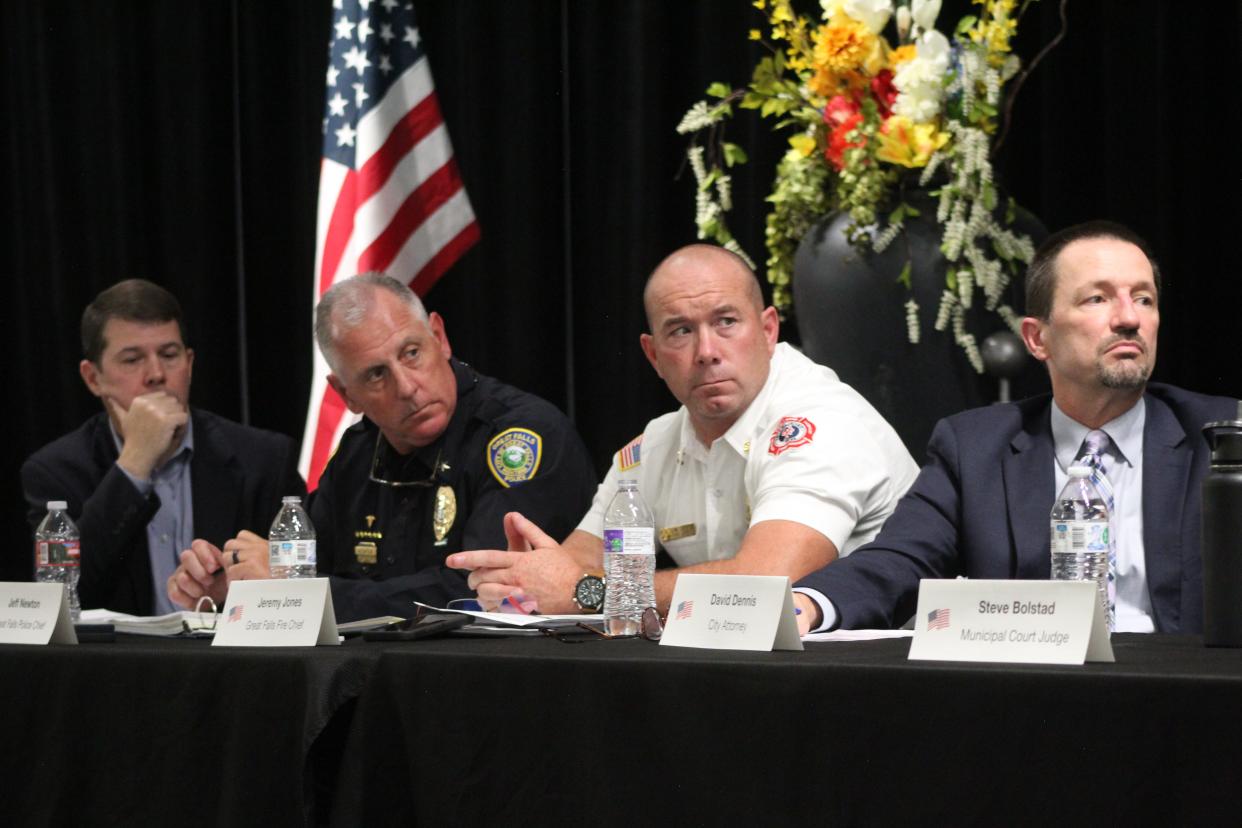
With 10 weeks to go before the Public Safety Levy election, city officials gathered for a second time for a panel discussion to describe current conditions within Great Falls’ police, fire and legal departments, and to explain why the city is asking voters to approve a $10.7 million property tax increase on Nov. 7. The levy would add roughly $280 annually to the property tax bill on a $200,000 home.
Wednesday night’s meeting at Marshall Family Hall in the Alliance for Youth building was similar in some respects to a larger public meeting held at the Mansfield Theater last June, where city officials reminded the public that Great Falls voters have not approved an increase in funding for public safety services in 54 years.
Since then the city’s population has remained fairly stable, but Great Falls’ geographic footprint has expanded from 18 square miles, its size in 1969, to more than 26 today — a 44% increase — and fire and emergency medical calls have increased by 700%.
“This Public Safety Levy question has been in the making for over 20 years,” City Manager Greg Doyon said. “It has been the primary topic for every budget that I’ve done for the city of Great Falls.”
While the message at Wednesday’s panel discussion was similar, its focus changed. Hosted by Great Falls/Cascade County Crimestoppers, the Aug. 23 meeting was more specifically focused on how the increase in crime and substance abuse is impacting the city's youth. In addition to various Great Falls department heads, the panel this time included law enforcement officers and social service providers who work directly with young people on a daily basis.
“Our assaults with a weapon have just about tripled in the last five years,” said Shanna Bulik-Chism, who serves as warden for the Cascade County Juvenile Detention Center. “Out of the 183 youth from Cascade County that we held last year we had 36 that were charged with assault with a weapon. That doesn’t include partner/family member assaults with a weapon, that doesn’t include aggravated assaults, that doesn’t include the sexual assaults.”
“It’s crazy to see the crimes that are happening now compared to when I first started,“ she added. “At one point about four months ago I had five youths in the Juvenile Detention Center for homicide. I’d like to say that we’re seeing improvement, but ever since COVID we’re seeing our court systems backed up and we’re still paying the price for that.”
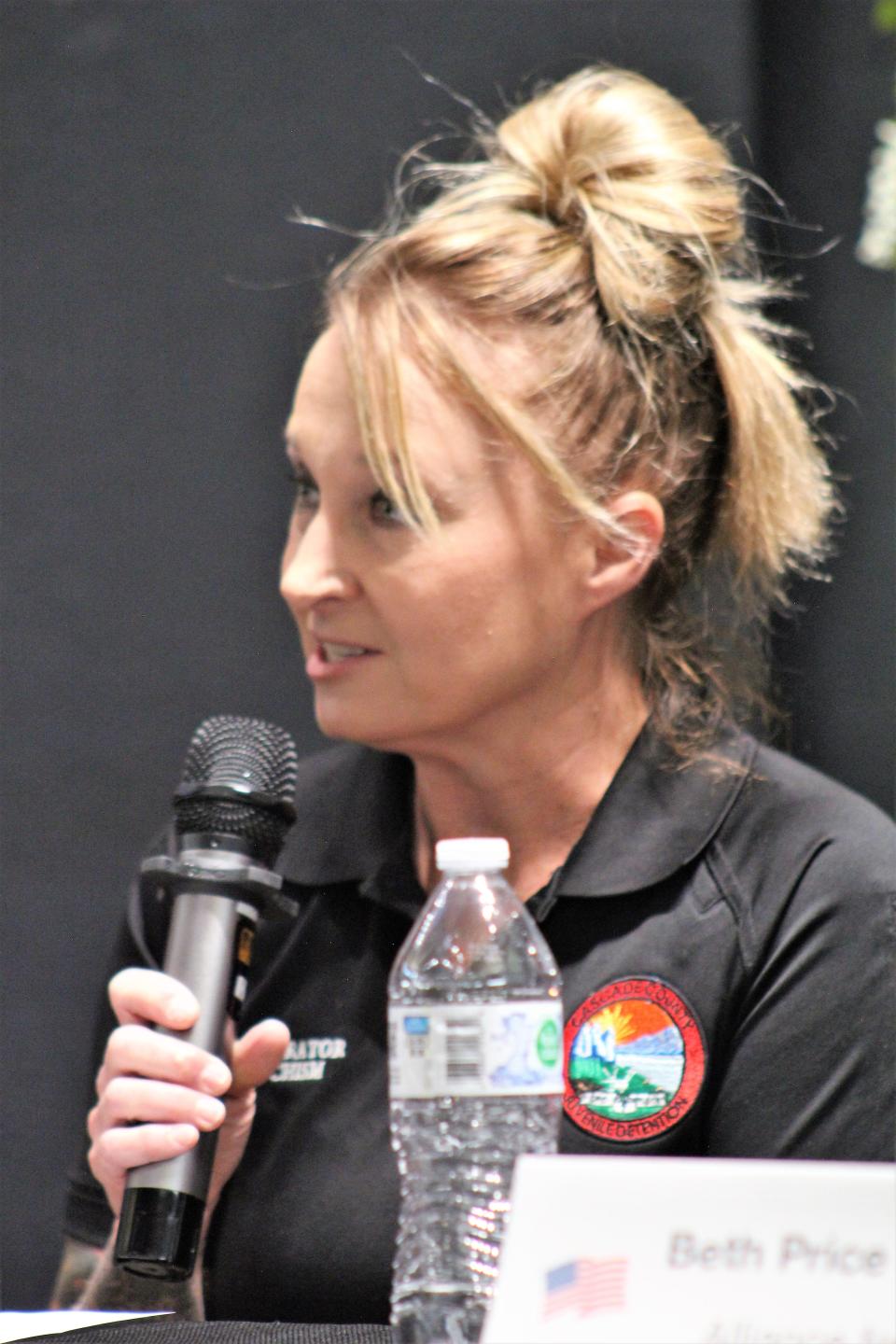
According to information provided by Bulik-Chism, the Juvenile Detention Center housed 26 Cascade County youth between the ages of 10 and 18 last year who were convicted of having physically assaulted either an adult caregiver or a sibling.
“Not only are we seeing more partner/family member assaults, were seeing repeated PFMAs where youth are chasing parents with machetes, knives, all sorts of weapons. And officers are not just coming in once, they’re coming in three and four times. That’s scary,” Bulik-Chism said.
Bulik-Chism said that the increase in youth crime is closely linked to drug use. Not only are more of the county’s young people using drugs and alcohol, the types of drugs they are using are becoming more potent and addictive.
"We urinalysis test every youth that comes into our building and about 89% of our youth that come in are either under the influence or test positive for some sort of alcohol or drug,” she said. “We used to test for five substances, we now test for 14. We have youth who are testing positive for amphetamine, methamphetamine, fentanyl, barbiturates — you name it and they’re coming in positive for it.”
Not only are more local young people engaging in criminal activities, more are also being exposed to and becoming victims of them, said Sgt. Katie Cunningham, who heads both the Great Falls Police Department’s Special Victims Unit and the department’s School Resource Officer (SRO) program.
“As far as the Special Victims Unit goes, we investigate all child deaths, child sexual abuse, physical abuse, neglect, malnourishment, all that kind of thing,” Cunningham said. “One of the biggest pushes we’ve had recently is our drug endangered children. A lot of people probably don’t even know what that is.”
“A drug-endangered child is a child who has been exposed to drugs because of their caregivers’ misuse,” she explained. “They know they use drugs. They make that choice, but they have no idea they’re exposing their kids to it because they think if I go smoke it in the garage it’s not going to get on me, it’s not going to get on my child. We have kids testing positive for fentanyl. I can’t believe we haven’t had a child die yet.”
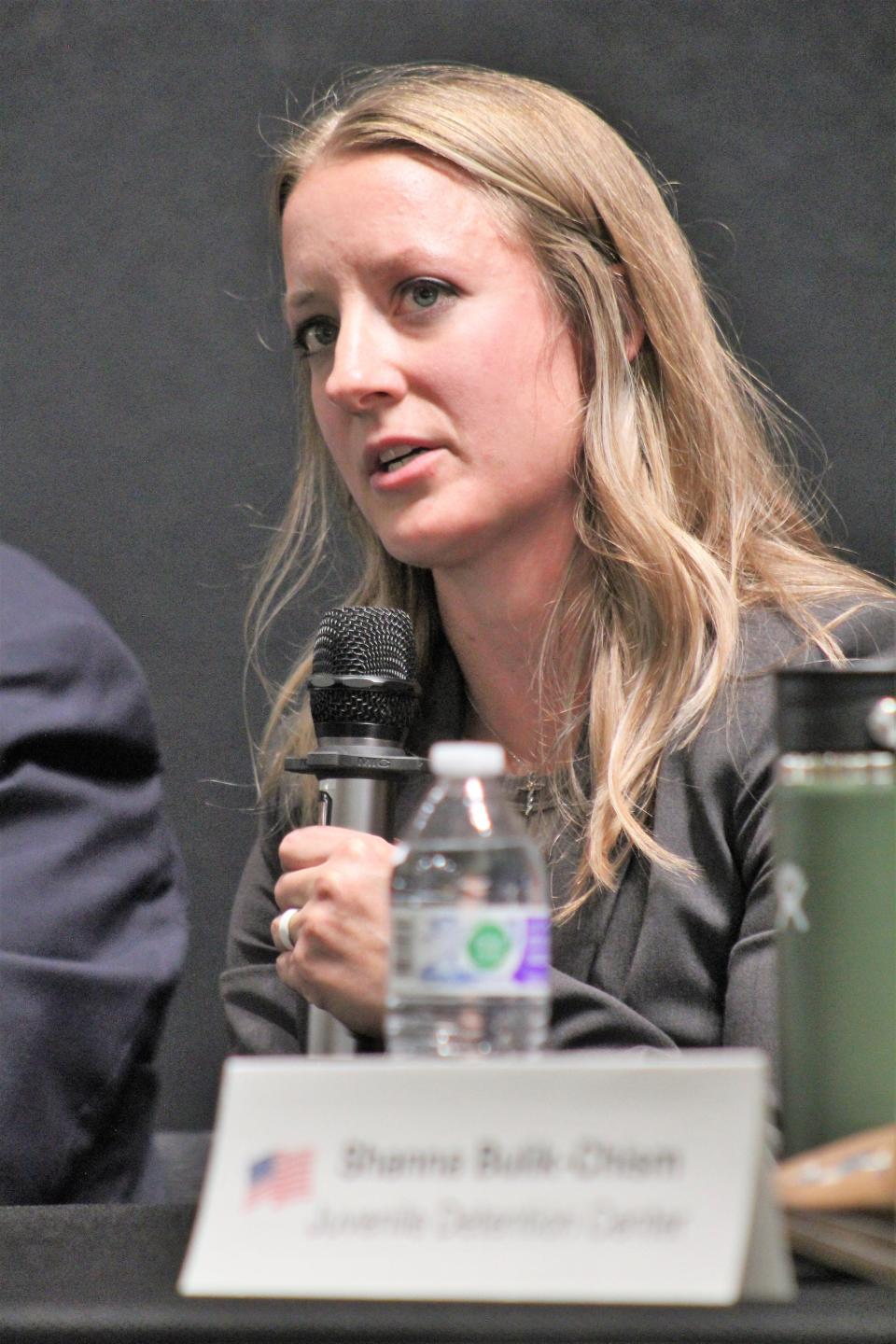
Sex crimes against children are also on the rise. Cunningham said that since joining the Special Victims Unit she’s seen a significant increase in this category of offense.
“When I was an investigator, I had about 100 cases a year,” she explained. “We had three investigators at the time, so we had about 300 cases a year between the three of us. Just in the last 24 hours I’ve assigned three cases to one investigator. We’ve got to do what we can to keep kids safe, but I worry that the wheels are going to fall off because they’ve already kind of started to.”
The volume of sexual assaults against child in Great Falls has now reached the point that SVU investigators are being forced to make hard choice on which cases to investigate.
“We have to decide which child sex crimes we investigate, and I can’t begin to tell you how difficult that is,” Cunningham said. “To get these referrals across my desk and say, 'I’m sorry, I believe that you were abused, probably by your own caregiver or parent, but I can’t do anything to help you because you are no longer in danger.' It’s heart-wrenching.”
Staffing woes
The disturbing increase in crimes committed both by and against young people in Great Falls is occurring before the backdrop of a police department that falls short of staffing standards.
In 2009, the Great Falls Police Department asked the city’s taxpayers to approve a levy request that would have added 17 new employees to its roster. That proposal failed overwhelmingly, with 60% of voters rejecting the request.
Great Falls Police Chief Jeff Newton said the law enforcement staffing standard across the United States is to have a minimum of 1.8 sworn officers per 1,000 citizens in the community. By that standard, Great Falls, with a population of slightly more 60,000, should have a minimum of 109 officers. The GFPD is currently budgeted for 92, but 10 of those positions remain unfilled due in large part because the workload for police officers in Great Falls is so demanding.
“During 2022, because of short staffing, we had a combined total of 13,531 hours of overtime work to backfill the shortage,” Newton said. “If you equate that to 2,080 active-duty hours per officer per year, that’s six and a half officers.”
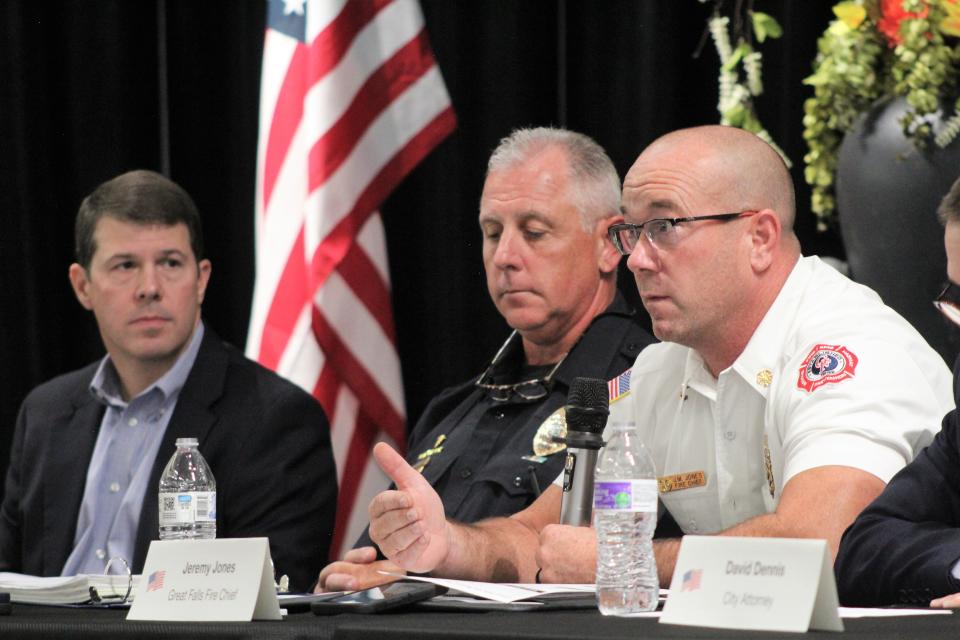
The shortage of police officers means that the Great Falls Police Department must consistently prioritize calls for service. On average, the GFPD receives 140 to 150 calls requesting a response each day, or about one every 10 minutes. Newton emphasized that the department will eventually respond to every call it receives, but it may take hours to respond to a non-injury vehicle collision and days to respond to a low-level property crime.
“We’ve become reactive and not proactive,” Newton said. “We’re having to prioritize our calls for service – not only in the street but also in our investigations bureau, which means we can only investigate the worst crimes that come in and sometimes the property crimes have to get pushed down.”
“Our SVU detectives are having to prioritize those crimes as well,” he added. “They’re all heinous, especially when they involve children, but they’re being forced to look at the worst of the worst, focus on those and get to the others when they can. That is the reality of where we’re at in our capacity to provide service to the community.”
The same staffing dilemma extends to Great Falls’ schools, where four SROs are all that’s available to provide service to the 11,000 students and staff at the city’s 25 schools.
“On a daily basis our school resource officers get no break,” Cunningham said. “They work from 7:45 a.m. to 3:45 in the afternoon and they don’t take a lunch break, they don’t to schedule doctor’s appointments, they don’t get to go to school kids’ programs, they don't get to do those things. There’s literally no time.”
“They’ll be sitting in an office talking with a student who had a (vaping device), and all of a sudden, they’re getting an emergency phone call from an elementary school because there’s a child standing on a desk throwing things and they need law enforcement intervention,” she continued. “This is a daily occurrence."
“The overall wear and tear on these SROs; how long can they take this?” Cunningham asked. “The hardest part for me is seeing the wear on them every single day.”
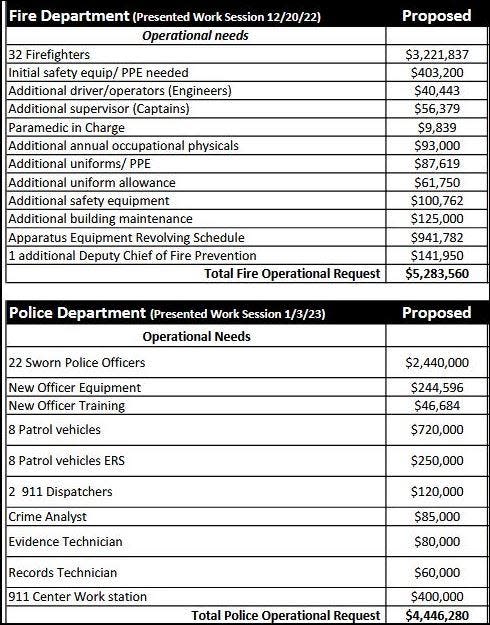
The severity of violence SROs encounter at the city’s schools is also mounting. Statistics from the Cascade County Juvenile Detention Center show that in the past year, 10 youths were charged with assault on a police officer, 14 with resisting arrest and 35 with obstructing a police officer.
“This last year was just outrageous,” Cunningham said. “I can’t even begin to tell you how violent kids have gotten with the school resource officers; how violent the schools have gotten. It’s taken a long toll on our officers. We definitely need a couple more SROs.”
If passed by voters, the Public Safety Levy would allow for that addition of 22 sworn police officers, plus three additional support staff and equipment to the Great Falls Police Department.
Judiciary impacted as well
While felony offenses are all prosecuted at the district court level, the backlog of cases is also having a dramatic impact on the Great Falls Municipal Court. City Attorney David Dennis said the municipal court’s three prosecutors and three support staff process a little over 10,000 citations a year. The majority of these are settled out of court, but a significant number of alleged offenders do opt to go to trial.
“If you specifically look at misdemeanor criminal prosecutions, we prosecute just over 4,000 misdemeanor criminal cases a year, about 50 more that the Billings City Attorney’s Office prosecutes with half the number of prosecutors,” Dennis said. “In our office each prosecutor is handling about 1,400 criminal cases a year, in addition to all the traffic citations and the other cases they’re handling.”
In Great Falls, trial day in the municipal court is each Wednesday. Dennis said each prosecutor typically handles 13 to 14 trials bench trials each week. The heavy load means that prosecutors frequently have little time to speak with victims or witnesses and may not of had an opportunity thoroughly examine case files.
“The witnesses get called up, and I’m thinking through my direct examination on-the-fly,” he said of a typical day in municipal court. “If there’s a defense council, I’m thinking about my cross examination on-the-fly. That’s how it works for our office when we’re trying cases. That’s just not how it should work.”
“The prosecutors come in with bags under their eyes,” observed Municipal Court Judge Steve Bolstad. “They are tired out and I’m sitting there yelling at them because maybe they didn’t get a hold of something. It’s a very difficult position.”
“The police are also under great strain,” he added. “They’re shorthanded and sometimes they come in not ready for a trial because they’ve been out the night before on some incident that kept them busy. Then they have to come into my court in the morning.”
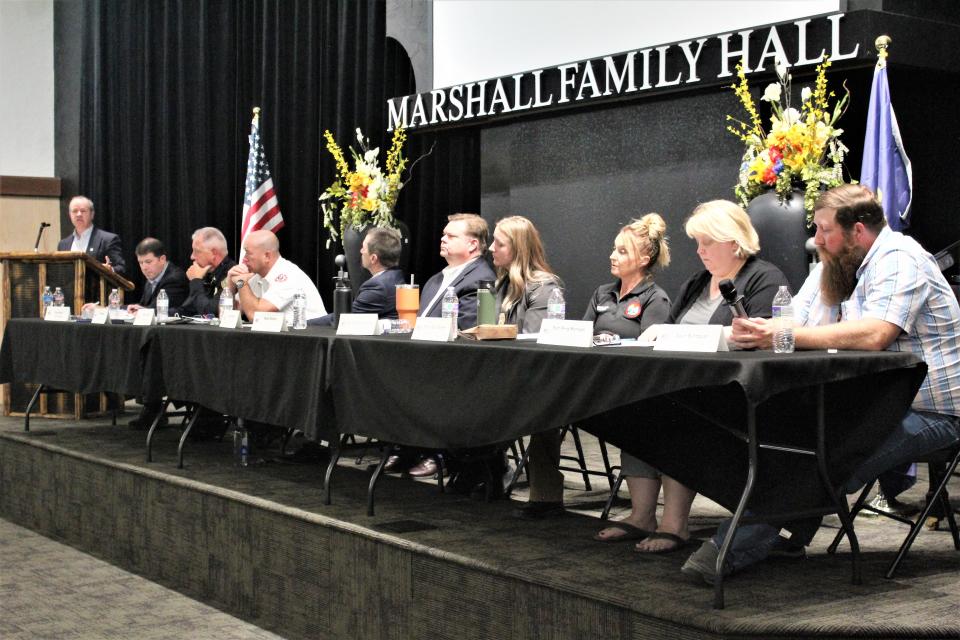
The Great Falls Municipal Court is struggling with its own staffing shortage. Currently the court does not employ either a jury clerk or a compliance officer, a situation that has made it more difficult to seat a jury and to ensure that those convicted of an offense pay their fines or restitution to their victims.
“Prior to COVID we started seeing an increase in mistrials because we could not seat a jury,” Bolstad said. “If we go past 180 days and the defendant hasn’t continued, it becomes a speedy trial problem. The case is dismissed.”
“We were calling 30 (potential jurors) for every trial setting … and we generally got anywhere from two to 12 to show up,” he explained. “In order to increase the odds, we started pulling 50 (potential jurors). Now we get maybe 20, and we can seat a jury with 20 people.”
“My clerks do the best they can,” Bolstad continued. “They try to contact jurors the night before, make sure their addresses are correct and make sure they are going to show up, but it is still lacking. We have a lot of people who do not want show up for a jury trial and sit in a jury for a day.”
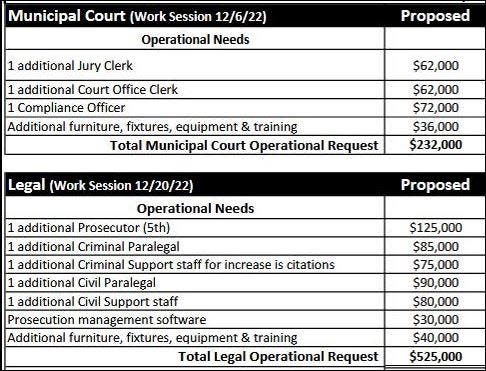
The primary job of a compliance officer is to follow up on defendants convicted of an offense and to make sure they comply with the court’s order, but they have other responsibilities as well.
“They also reach out to many of the mental health cases that we have,” Bolstad explained “Many of these people just need somebody to help them get through the programs. What does that mean for Great Falls? Hopefully, fewer people downtown that are just lingering and being swept aside or dying on our sidewalks.”
If passed by voters, the Great Falls Public Safety Levy would add a fifth prosecutor to the City Attorney’s Office, plus a jury clerk, a compliance officer and various support staff and equipment for both the Municipal Court and City Attorney’s Office.
Bolstad, who spent his childhood in Great Falls, harkened back to 1969, which was the last time Public Safety Levy passed in Great Falls. At the time, Great Falls was booming economically, whereas Butte was facing the collapse of its mining industry.
“At the time, the Anaconda company was still going, Boeing was out at Malmstrom Air Force Base and we had a lot of things going on for us,” he recalled. “We had a superb police force, and we had a superb fire department. However, the people of Butte were going through a hard time and there was a lot of crime.”
“I love Butte, I love the people of Butte. They are resilient, but I fear that’s what we may become,” Bolstad said.
This article originally appeared on Great Falls Tribune: Great Falls levy to address crisis in youth crime, addition

